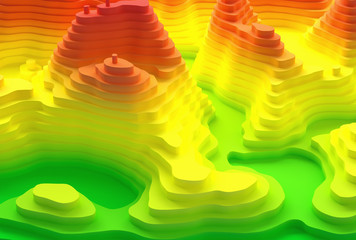
Geoscience, also referred to as Earth science, contains a wide variety of disciplines targeted on understanding the Earth and its procedures. It includes the examination of various aspects of the Earth, together with its shape, composition, dynamics, and records. Geoscientists appoint an expansion of techniques to investigate and examine unique phenomena happening on our planet. Those techniques are important for advancing our knowledge of Earth’s structures and addressing essential challenges which include weather alternate, natural dangers, resource management, and environmental sustainability.
KEY SKILLS/TECHNIQUES OF GEOSCIENCE:
Geoscience encompasses a huge range of scientific disciplines focused at the examination of the Earth and its processes. a few key strategies used in geoscience encompass:
Remote Sensing:
This includes collecting facts approximately the Earth’s surface with out bodily contact, normally through satellite or plane-primarily based sensors. It is used for mapping, monitoring modifications in land use, assessing flora health, and analyzing natural disasters like wildfires or hurricanes.
Geographic Information Structures (GIS): GIS combines geographical records with facts approximately features on the earth’s surface. It is used for mapping, spatial evaluation, and visualization of geospatial statistics, helping in selection-making methods in numerous fields consisting of city planning, environmental management, and natural useful resource exploration.
Seismic Techniques:
Seismic techniques involve generating and studying waves that propagate through the Earth. This includes strategies inclusive of seismic reflection, refraction, and tomography, which can be used to examine the Earth’s interior structure, discover oil and gas reserves, display earthquakes, and examine the stability of the ground for construction purposes.
Geophysical Surveys:
Geophysical surveys measure the bodily homes of the Earth, consisting of its magnetic or gravitational field, electrical conductivity, or thermal properties. These surveys assist in mineral exploration, groundwater mapping, archaeological investigations, and environmental studies.
Stratigraphy and Sedimentology:
These techniques contain reading the layers of rock (strata) and the processes that shape them. Through studying sedimentary rocks, geoscientists can reconstruct past environments, recognize Earth’s records, and predict future geological events.
Geochemical Evaluation:
Geochemistry entails studying the chemical composition of rocks, minerals, water, and soil to apprehend geological methods, along with weathering, erosion, and mineral formation. It’s utilized in mineral exploration, environmental monitoring, and identifying potential assets of natural assets.
Geochronology:
Geochronology is the observation of the age of rocks, fossils, and geological events. strategies along with radiometric courting, dendrochronology (tree-ring dating), and stratigraphic correlation help geoscientists determine the timing of geological events and evolutionary procedures.
Geomorphology:
Geomorphology is the have a look at the Earth’s surface landforms and the techniques that shape them, consisting of erosion, weathering, and tectonic interest. Strategies in geomorphology consist of aerial photography, field mapping, and numerical modeling to understand panorama evolution and dangers like landslides and coastal erosion.
Paleontology:
Paleontology entails the examination of fossils to recognize the records of life on this planet, evolutionary strategies, and past environments. techniques include fossil identity, courting strategies, and paleoecological reconstructions.